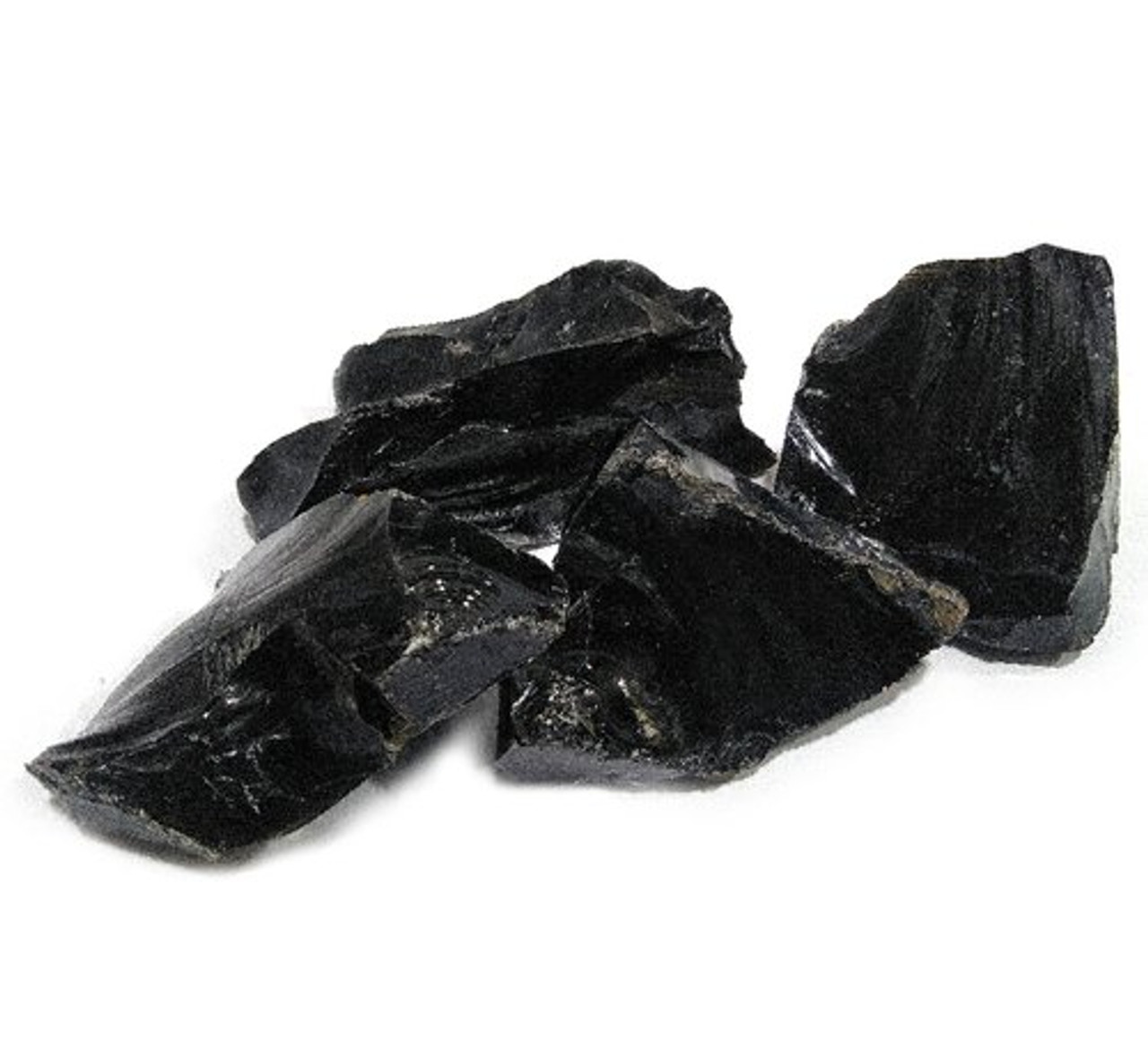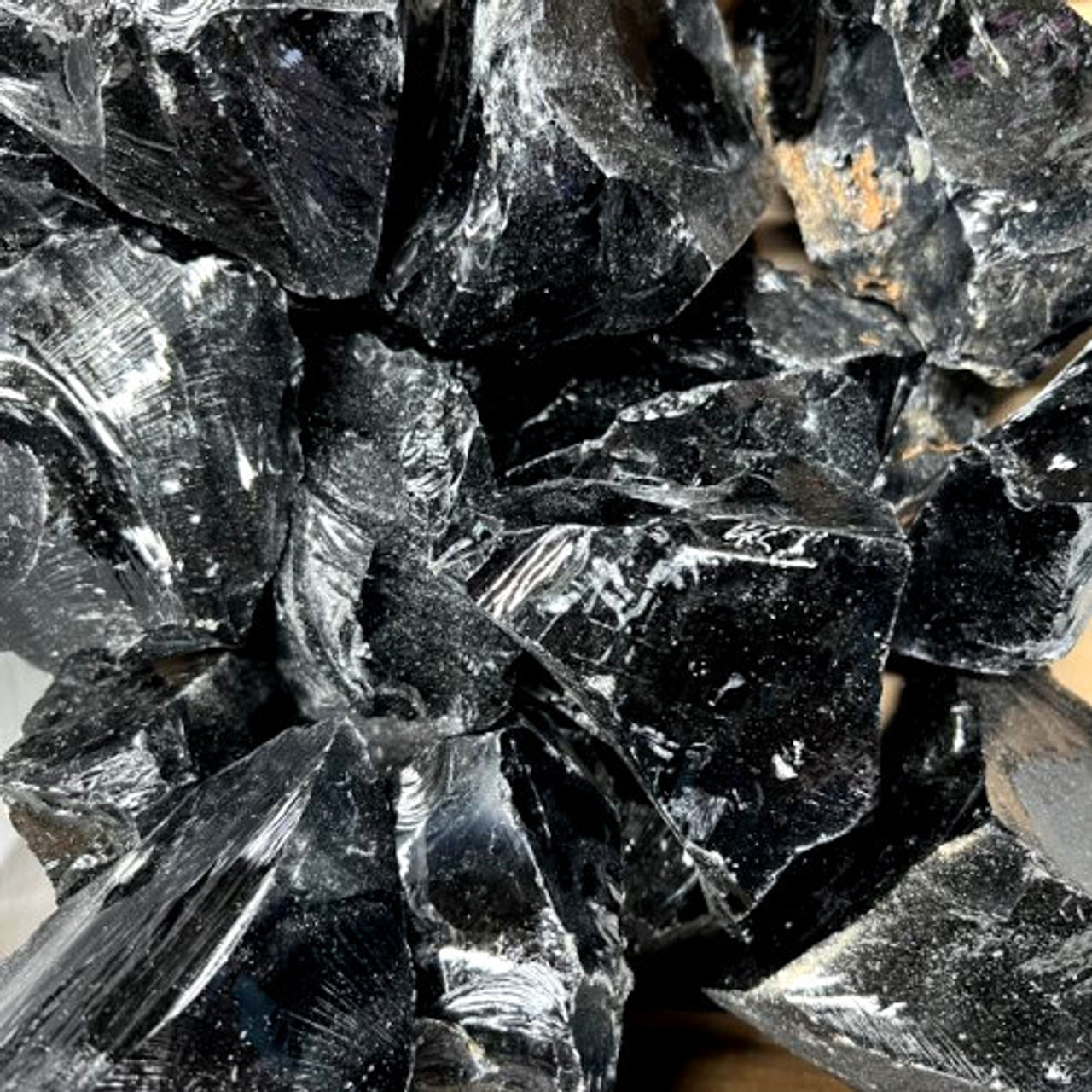Product Description
Obsidian Black Rough Stone - Select
Mineral Information:
Black obsidian is a type of volcanic glass that is formed when molten lava cools rapidly without crystal growth. It is primarily composed of silica (about 70-75%) and contains trace amounts of impurities such as iron and magnesium, which contribute to its dark black color.
Black obsidian has a smooth, glassy texture and is known for its deep black or sometimes dark brown appearance. It can exhibit a vitreous or shiny luster. When obsidian is pure and lacks any internal inclusions or fractures, it can be highly reflective, almost like a mirror.
Obsidian can form in various volcanic environments, but it is most commonly associated with rhyolitic volcanic eruptions. It can be found in different parts of the world where volcanic activity has occurred, including regions in North America, Mexico, Iceland, Japan, and Italy.
Metaphysical Meaning:
Black obsidian is often considered a protective stone, shielding against negative energies and psychic attacks. It is believed to create a barrier that helps to repel and absorb negativity, promoting a sense of grounding and stability.
Black obsidian is associated with enhancing spiritual awareness and intuition. It is believed to help access hidden knowledge and insights, providing clarity and guidance on one's spiritual path. Black obsidian is also used for spiritual purification and cleansing, clearing away stagnant energy.
Mineral Care:
Black obsidian, despite its appearance of hardness and durability, is actually a relatively fragile material compared to many other gemstones or minerals. Its fragility is primarily due to its unique formation process as volcanic glass.
Obsidian lacks a crystal structure and is essentially a solidified, amorphous form of volcanic lava. As a result, it does not possess the internal crystalline structure that provides strength and resilience to many minerals. Instead, obsidian has a random arrangement of atoms, making it more susceptible to fractures and breakage.
The lack of a crystalline structure also means that obsidian lacks the cleavage properties found in many minerals. Cleavage refers to the tendency of a mineral to break along planes of weakness. Since obsidian lacks defined cleavage planes, it tends to fracture in irregular and unpredictable ways when subjected to stress or impact.
The sharp, glass-like nature of black obsidian can make it prone to chipping or fracturing, especially at thinner or more vulnerable points. It is important to handle black obsidian with care to avoid accidental impacts or dropping, as such incidents can result in the formation of chips, cracks, or even complete breakage.
To protect black obsidian from damage, it is advisable to handle it gently and avoid exposing it to rapid temperature changes, extreme pressures, or harsh chemicals. When storing or transporting black obsidian, it is recommended to keep it in a padded or cushioned container to minimize the risk of accidental breakage.
While black obsidian may appear solid and resilient, its fragile nature reminds us to treat it delicately and with respect to ensure its longevity and beauty.
Disclaimer:
No information here is intended to diagnose, treat or cure ailments or afflictions of any kind. One should always consult a medical professional if a serious issue presents itself.








